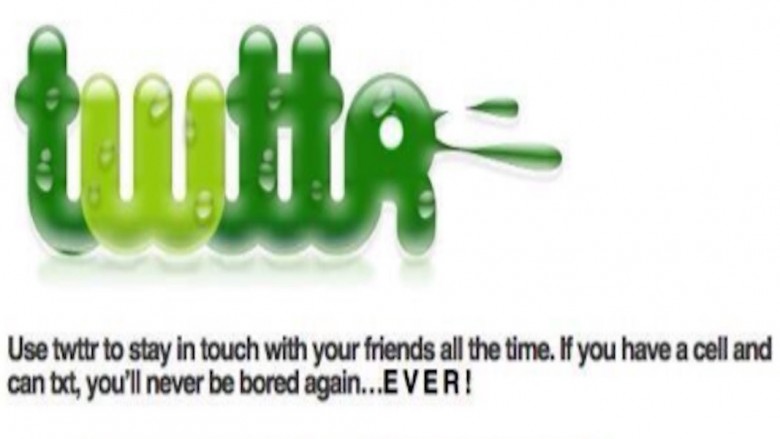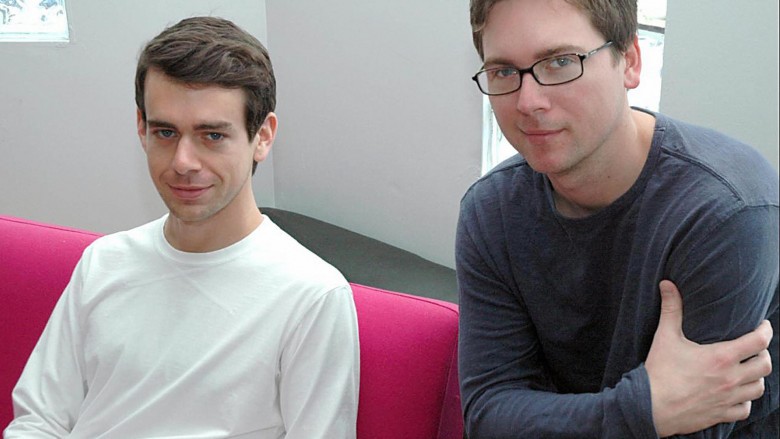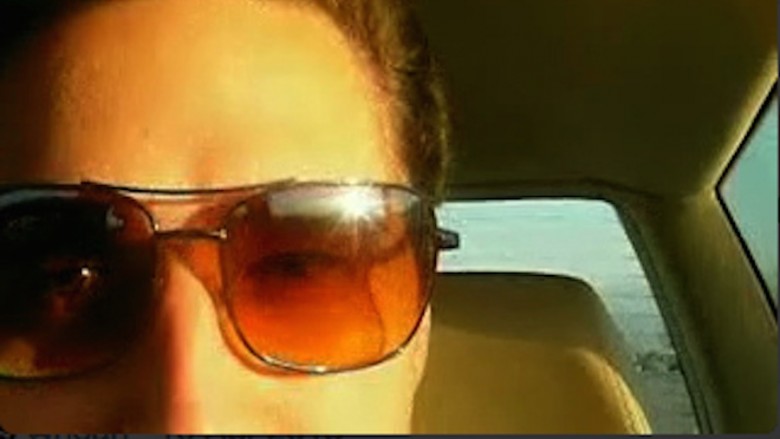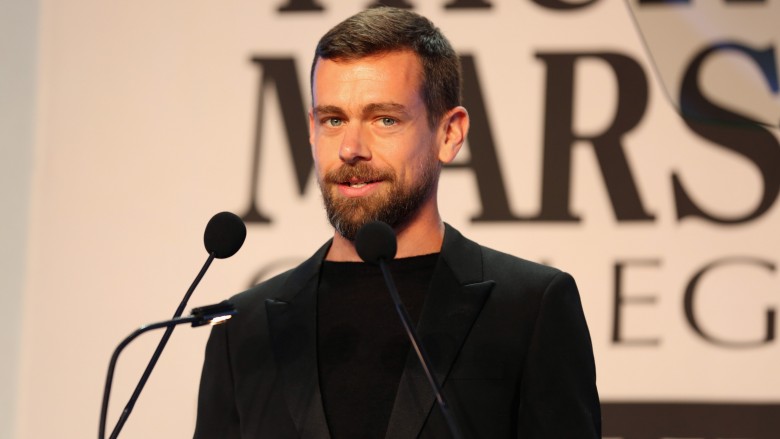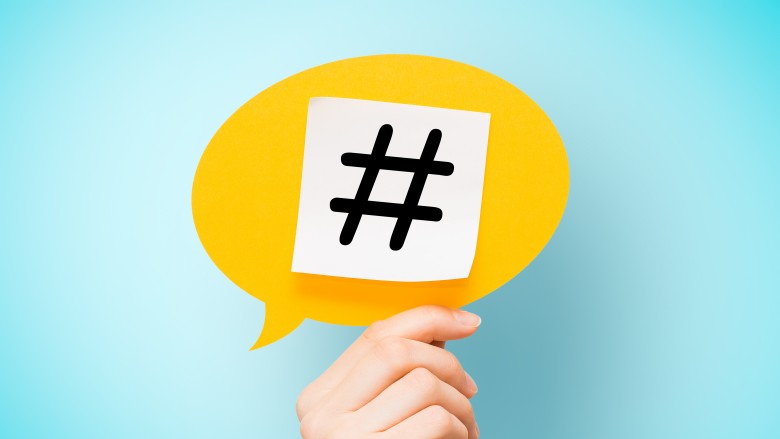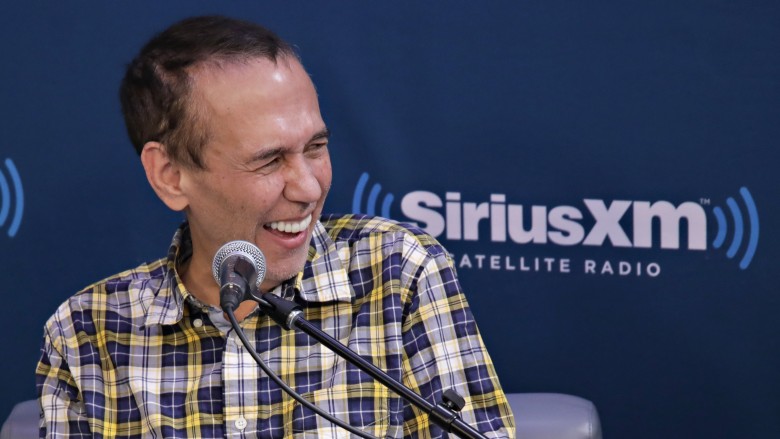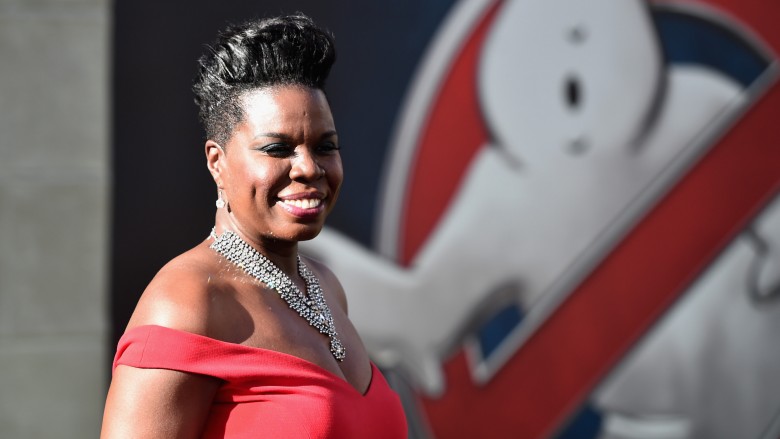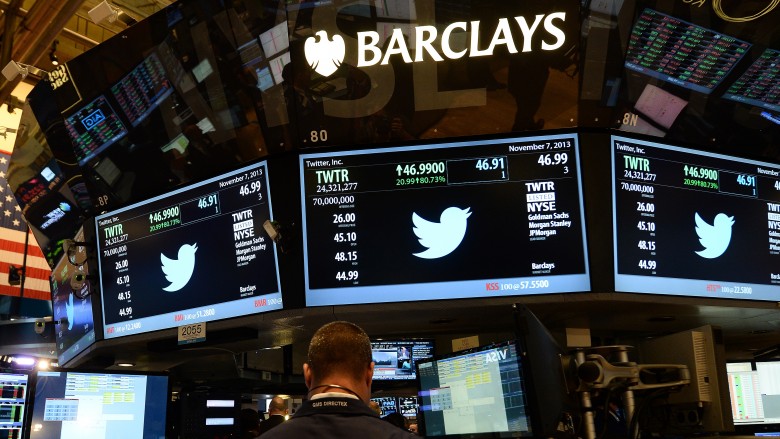Secrets Twitter Doesn't Want You To Know
Twitter. The place where everyone is welcome to give a status of their day, write a joke, or accuse former presidents of elaborate spying schemes. Though the popular social media site gives voice to regular folks and celebrities alike, there's a lot in the backstory of the business and the business itself that the company would rather keep under wraps. So read ahead before you next tweet out a 140-character joke about your day.
The original website looked horrible
Today, Twitter has a streamlined, simple homepage that appeals to all ages and is easy to use. The original homepage, didn't quite manage that.
Instead of the cute blue bird we know today, Twitter (then called "Twttr") at the time opted for a logo that looked like it was made from Nickelodeon gak and alien vomit. It debuted in 2006 and had a real Poochie quality to it, trying far too hard to be cool. From their use of the phrase "What up?" to the fake graffiti font to their hatred of vowels, the page seemed designed to make everyone over 25 avert their eyes in disgust. At the top of the page, they claimed, "If you have a cell and can txt, you'll never be bored again ... E V E R!"
Twttr's case against boredom was questionable since the first tweets were far from scintillating. You would read updates like "enjoying the music of my friends" or "waiting for slow bagel. Board meeting in 20." Boredom annihilated! But soon, Twitter succumbed to the necessity of vowels and adapted a more streamlined look and logo more similar to what we know today.
Twitter started as a place to play podcasts and totally failed
Originally, Twitter had nothing to do with sending out short messages about bagels. Evan Williams, who had recently sold Blogger for millions, and Noah Glass created Odeo, a website for podcasts. The site would let you browse podcasts and make your own from your computer or phone. They imagined a world where everyone would have their own podcast and be able to broadcast their thoughts to all their friends.
Though that prediction isn't far from the current podcasting world, Odeo came across one big problem: Apple. In 2005, iTunes announced they'd now be carrying podcasts. With that simple statement, Odeo was worthless. Nobody would need a secondary site for podcasts when the already popular iTunes had it covered. It was clear that Odeo was doomed.
The founders did not get along and thought their company was a mess
Before iTunes cast a final nail in the Odeo coffin, they were already having a range of problems. No matter how hard they pushed, they couldn't drum up interest in podcasting. The Odeo office had mics set up, and they encouraged their employees to create content for the platform, but no one did. Even the people whose jobs depended on the success of a podcasting site had no interest in recording their thoughts on audio.
Then, the creators started fighting. Evan Williams and Noah Glass cofounded the company, Biz Stone was later brought on, but Jack Dorsey (originally hired as a freelance engineer) became friends with Williams and Glass and kept gaining influence as the cofounders grew apart. Glass was seen yelling at Williams in front of employees, "I should be running this f***ing company! I could do a much better job than you. You don't know what the f*** you're doing!"
In addition to warring founders, the employees had no organization and had a disdain for any kind of company policy. The vice president would hold a stand-up meeting. Sadly, it didn't involve a tight five about what the deal was with airplane food, but just had employees stand for a quick overview of the day. Two employees refused to stand, for no real reason. So, they switched it to sitting meetings. The two guys would then stand in protest every time.
With tensions between founders, a product nobody used, and employees that loved acting like jerks, as Jack Dorsey put it, "Odeo is a f***ing mess."
It was almost called Stat.us or Vibrate
It was clear that Odeo was dead in the water, but instead of closing up shop and heading their separate ways, Williams and Glass encouraged employees to pitch new ideas. Jack Dorsey thought it would be great to have a website where people could share status updates. Noah Glass didn't think the idea was particularly amazing until he realized it could be a tool for connection and conversation rather than just spewing out "Getting coffee" or "Heading to Blockbuster. That company will never die."
The company jumped on the idea and completely changed the business. But they needed a new name. In Dorsey's original sketch of what the Twitter homepage might look like, he called the site "Stat.us." That name didn't stick, so as a joke, Williams tossed out the name "Friendstalker," but they figured it was a little too weird and too accurately described Facebook. Glass searched through the dictionary to come up with the perfect name. Seemingly taking inspiration from anything around him, he almost named the company "Vibrate" after he set his phone to vibrate. Since "Vibrate" might attract a slightly more adult clientele then they desired, Glass thought maybe "Twitch," but that still wasn't it. After thumbing through the "tw" pages of the dictionary, he landed on "Twitter". It felt right. Of course, they first went with "Twttr," inspired by Flickr and its recent multi-million-dollar sale. But after a while, they brought the "i" and "e" back, and Twitter as we know it was born.
A cofounder got erased from Twitter's history
Though Williams and Glass started Odeo, and Williams, Glass, Stone, and Dorsey were the strongest forces behind the transition to Twitter, if you read about the company's history, Glass has almost been cut out of Twitter's inception entirely.
Noah Glass and Jack Dorsey became close friends, and according to Glass, they hashed out the initial idea for Twitter together. Glass was the one scouring dictionaries until he found the perfect name for the company. Plus, employees all agreed that though the basic idea was Dorsey's, it was Glass's enthusiasm that pushed the company forward. Investor George Zachary said, "There were two people who were really excited [about Twitter]: Jack and Noah Glass. Noah was fanatically excited about Twitter. Fanatically! Evan and Biz weren't at that level. Not remotely."
But Glass wouldn't last long. He was enthusiastic, but he did have a temper. Prone to yelling at Williams and other employees and also letting his ongoing divorce disrupt his moods at work, Dorsey threatened to quit if Glass wasn't fired. Dorsey made this request after his friend Glass confided in him that he was scared Williams was going to force him out of the company.
So, though he was so valuable to Twitter's beginnings, Glass was fired, and Dorsey became chief executive. Glass was upset by the whole ordeal. "I felt betrayed by my friends," he said, "by my company, by these people around me I trusted and that I had worked hard to create something with. I was a little shell-shocked. I was like, 'Wait ... what's the value in building these relationships if this is the result?'"
Jack Dorsey wanted to be Steve Jobs except terrible
When Dorsey took over, it wasn't all smooth sailing. Dorsey wanted to take credit for everything but also make sure he had time to leave early for his beloved sewing classes. Now that he was getting invited to parties around town, his blooming social life annoyed coworkers. His lackadaisical management style wasn't productive, and he forgot to back up Twitter's database. For some reason, Dorsey wanted employees to use Twitter via text message rather than online. In the old days before unlimited texting plans, this resulted in nearly $100,000 phone bills each month.
One day, Williams called Dorsey into his office and said, "You can either be a dressmaker or the CEO of Twitter. But you can't be both." Williams's stern conversation didn't change Dorsey's behavior, so he was fired in 2008 by Twitter's board. He received severance and a role as "silent" chairman, but his voting rights and power were all gone. Williams took over as CEO.
Dorsey wasn't going to give up so easily. He started rumors in the media that he alone came up with Twitter. Then, he started a "whisper campaign" among the board to force Williams out. Despite his previous bad behavior, the board sided with Dorsey and made Williams step down. Dorsey was promoted from "silent" chair to executive, getting him back into power.
Dorsey wanted to be the new Steve Jobs, seeing them both as intelligent men forced from their own companies before returning triumphantly to help them see the light. Unfortunately, Dorsey is no Jobs. Twitter hasn't had an iPhone-esque moment. In fact the company is stagnating. Without much growth, it'll be interesting to see if Dorsey does get his Jobsian day or if he gets fired again.
Twitter didn't create its most popular attributes, users did
Though the management situation at Twitter may have been fraught, they created a powerful social media tool. But the things people like most about the site weren't created by Twitter but by the users themselves. Retweets, for example. Twitter never meant to have retweets, but users started adding "RT" and the username of the original tweeter to send around other people's pithy messages. Twitter saw it was a huge success, so they made it a technical feature of the site, so you could just press a button to share someone's comedic status about waiting at the DMV.
But retweets weren't all. Twitter initially had no way for users to respond to each other, until somebody figured out that putting "@" then the username could be a way for people to exchange messages.
Twitter didn't even think of hashtags! Chris Messina tweeted one day, "How do you feel about using # (pound) for groups. As in #barcamp ?" Oh, how sweet, he called it a pound sign. The idea for grouping things together with a pound sign caught on, and Stowe Boyd came up with the name "hash tags." Now, hashtags are an integral part of our vocabulary, and we are so very grateful. #blessed
A lot of people have been fired over Twitter
It turns out there's a downside to everyone being able to say whatever they want to the entire world. Some of the time, a single tweet can completely destroy a career. In the case of Anthony Weiner, who accidentally tweeted out a pic of his namesake, his unfortunate social messaging ruined his chances of a successful political life.
Weiner is far from the only person who had their life changed for the worse by Twitter. Business Insider lists 13 people who were fired for Twitter offenses, including Gilbert Gottfried, who was removed from his vital role as the Aflac duck after he made jokes about the 2011 Japanese tsunami. Katie Rich suffered a similar fate when she tweeted a joke about Barron Trump and was subsequently "suspended" from her writing job at Saturday Night Live.
Though some of these people were fired for being openly racist or generally terrible, others were fired for just making a joke or trying to expose the poor working conditions of their job. Whether this trend of being fired for a 140-character outburst is good or bad, it should make you double check your tweets before you hit send.
Twitter is the number one place for online harassment
The Internet is full of trolls and people who will say horrible things for no good reason, but they tend to thrive best with Twitter. A study found that 88 percent of abusive social media occurs on Twitter. It's not hard to believe. Gamergate revolved around some women who criticized some video games for being sexist then got rape and death threats. Some even had to leave their homes for fear they'd be killed by rabid gamers.
Leslie Jones received a barrage of vile racists comments that led her to stop using Twitter for a while, and Sue Perkins, a British comedian and TV host, suggested that maybe she could host Top Gear, then had to leave Twitter because she got too many death threats.
Australia's Next Top Model judge Charlotte Dawson spoke out against cyberbullying then was targeted in a whirlwind of Twitter hate. People sent her pictures of dead bodies, made fun of her for not having children and tweeted things like "Please do the world a favor go hang yourself.#diecharlotte" and "Should hang herself. B**** already caused enough trouble and doesn't deserve that much fame #c***suckingb****es." After the harassment hit its peak, Dawson tweeted "Hope this ends the misery," "You win," then she tried to commit suicide. She was rushed to the hospital and survived the attempt but killed herself two years later at the age of 47.
Twitter has never made a profit
Though Twitter seems like a shining success, it's losing steam and money. From 2011–2015, Twitter lost $2 billion and has never made a profit. Though the user numbers have been climbing, in 2015, the company reported an annual net loss of $521 million.
Even the growth in users isn't enough. For ad sales to be profitable, advertisers need to know they're reaching a large audience. Though 319 million people on Twitter doesn't sound bad, it's nowhere near the 1.5 billion users Facebook has to offer. Even Instagram outranks Twitter. Since the user base is growing so slowly, they may never be able to make enough money to sustain themselves. So, tweet out your death threats now. The site might not be around forever to be a home for trolls and late night presidential statements.

